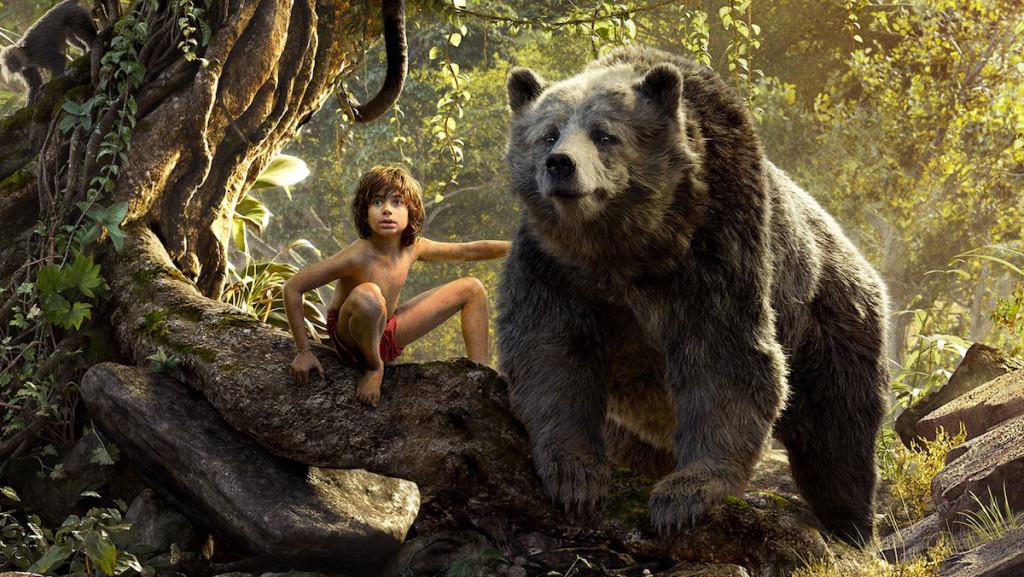In Jon Favreau’s “The Jungle Book,” Christopher Walken voices a giant orangutan. And he sings. That alone is worth the price of admission.
At this point, it’s hard to imagine that anyone has doubts about Favreau as a director. After all, he practically started the Marvel Cinematic Universe with Robert Downey Jr.’s flying around as Iron Man, eating cheeseburgers and being a wacky, cocksure billionaire.
Favreau’s latest feature thrusts viewers into the jungles of India alongside the “man-cub” Mowgli (Neel Sethi), a young boy quite literally raised by wolves, as he embarks on a journey across the jungle to escape the murderous tiger Shere Kahn (Idris Elba). On his adventure, Mowgli meets several friendly celebrities disguised as computer-generated animals, most notably Bill Murray as the ceaselessly hungry sloth bear Baloo, Scarlett Johansson as the colossal python Kaa and Walken as King Louie, an orangutan, whose scene, according to Favreau, was inspired by Marlon Brando’s role in Francis Ford Coppola’s “Apocalypse Now.”
Like some of the most disappointing movies ever made — the “Star Wars” prequels — “The Jungle Book” was filmed almost entirely on blue-screen backdrops in a Los Angeles soundstage. All of the animals were composed of computer generated images layered over puppets and motion-capture performers. This effect makes the young Sethi’s performance as Mowgli even more astounding. Never once does the audience suspect that Sethi is acting alone on an LA soundstage. In his close–ups, you can see the emotions in his eyes, the conviction on his face. His movements through the jungle are so lithe and agile that one should think he’s lived there all his life.
The voice acting, on the other hand, is a little flimsy. On the positive side, Walken is magical as King Louie, and Murray as Baloo is quite possibly the perfect casting choice. As Shere Kahn, Elba reinforces his voice with a menacing timbre. He already sounds like a tiger who’s ready to kill somebody, so the extra effort he puts in just helps to blend the line between tiger and Elba.
As for the other animals, however, one can’t lose the images of Sir Ben Kingsley, Lupita Nyong’o, Johansson and Giancarlo Esposito standing in carpeted, air-conditioned recording booths and speaking their lines into microphones. As the python, Johansson doesn’t bring enough menacing sibilation, not hissing so much as talking. Kingsley, as regally as he speaks, doesn’t quite nail the snarl and growl like Elba does. The wolves were the worst offenders of this. Nyong’o sounds gentle, like she’s voicing a sheep instead of a wolf, and Esposito’s performance as the pack’s leader lacks authority and command. And the wolf pups, though cute, would sound more at home in “Snow Buddies” than in this film.
Still, “The Jungle Book” remains more staggering an achievement than many other big-budget franchise films coming out right now. The action is lively, the characters have heart, and the jungle feels genuine.
But, at the same time, Favreau’s success on “The Jungle Book” is a good deal less impressive than his success with “Iron Man” or “Chef,” his passion project from 2014. It’s probably much harder to make a bad movie when 98 percent of the visuals are edited in during postproduction.
And yet, at the same time, it’s still awe-inspiring to see nearly photo-realistic animals interacting with real actors. The technology has certainly come a long way from the days of Murray’s “Garfield” films and Walken’s “The Country Bears.” Perhaps the problems with those films, however, aren’t the way they chose to animate talking animals. These films lack the vivacity of a Favreau film and don’t treat their source material nearly as respectfully.
In his “Jungle Book,” Favreau fills the story with realism, fear, danger and, at times, joy. The animals are all CGI, and many of the trees probably aren’t real, either, but it takes honest direction and strong writing to be able to give a film heart. To clarify: It takes honest direction, strong writing and Christopher Walken’s playing a giant orangutan.




















